Day 3: Torres del Paine
It feels strange to sleep until 8AM and wake up with the sky still completely dark. Having said that, it does allow us to enjoy the sunrise after breakfast.
We layered up for our morning horseback ride, met our guide Roberto, and drove about 20 minutes south through the park to the stables. Upon arrival, we were welcomed by Andres and several other gauchos, who showed us the proper Chilean riding technique (both reins in one hand) and paired us up with our horses. Andres then led us onto the trails with new views from the transition region of the park (south of the hotel).
When we were done with the ride, we gathered in the stables for a traditional mate tea ceremony. Served in a dried gourd mug and consumed through a steel straw, mate is made from a heap of Yerba tea leaves and mixed with hot water, then shared with the gaucho and the guests. Etiquette dictates that when you’ve had enough, you return the cup with the straw facing the gaucho and say “gracias,” or else you will be served indefinitely. Eventually we all gracias’d our way back to the van.
We returned to Explora for a leisurely lunch, changed into our hiking gear, and headed back out for our afternoon hike. All SIX guests who are currently staying at the hotel (yep, six) went on the hike with our guide, Danny. We drove about 20 minutes northeast and started walking to Lago Sarmiento. Along the way, we saw some guanacos along the road. Danny pointed out the condors (as one does) and we finally realized that Condors might get extra attention here because they are featured in the Chilean Coat of Arms (akin to bald eagles in America).
Lake Sarmiento has a pH of 9, making it extremely alkaline, so only bacteria can survive. When the bacteria interacted with calcium carbonate from the last ice age, it formed white porous rocks called thrombolites. The thrombolites often have open, cave-like areas that make a good shelter for pumas. We saw some bones strewn about and a guanaco carcass, but alas, we did not get to pet any pumas.
With daylight fading and snow clouds enshrouding the peaks of the Paine range beyond, we hiked out to the van and drove back to Explora. We have determined the Explora van drivers are some seasoned pros, given the winding and narrow roads, as well as their amazing manual shifting prowess on the uphills.
The new nightly routine is hard to beat. Change of clothes, relax at the bar, and plan tomorrow’s exploration “€ which will be a full-day trek to the base of the Torres del Paine towers. Then delicious dinner, some quality couch time to type this up, and we’ll see ya tomorrow night!

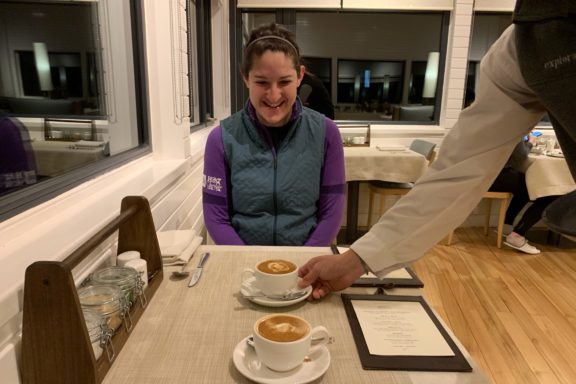
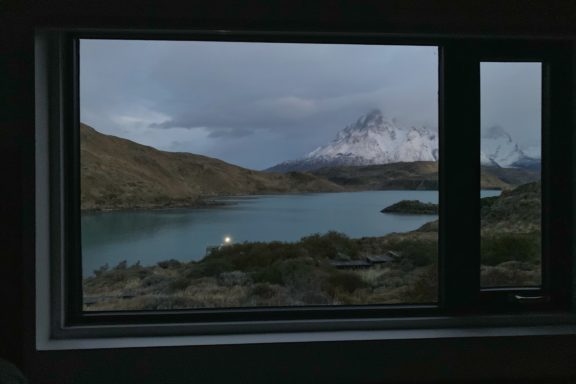

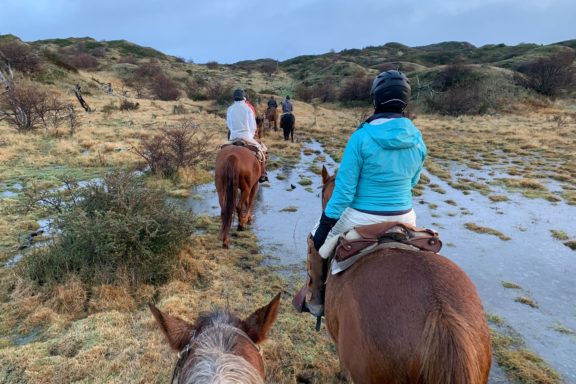
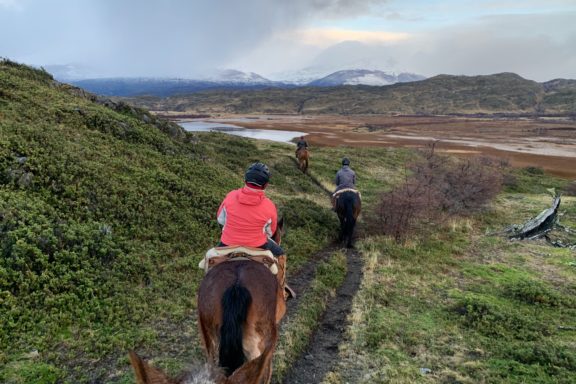
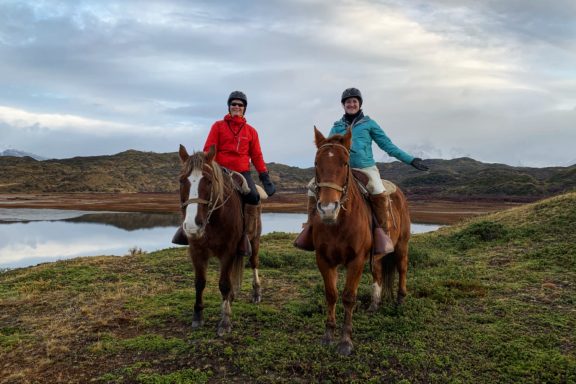


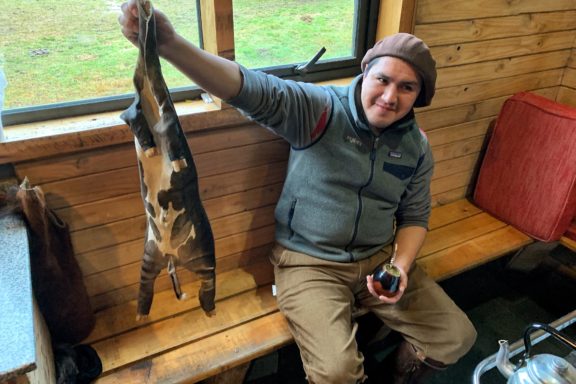
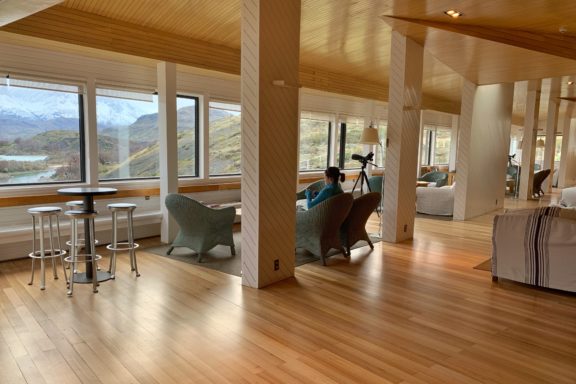

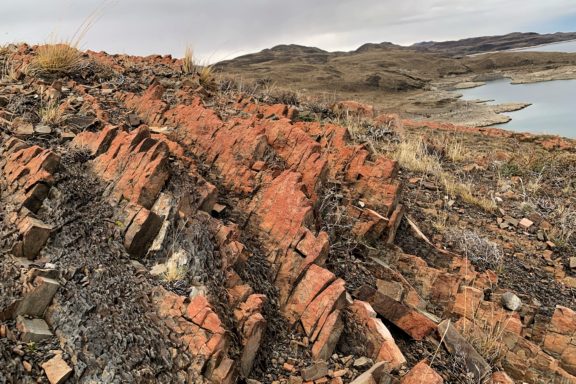
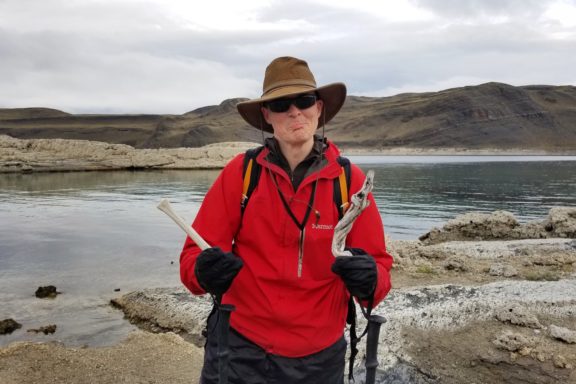
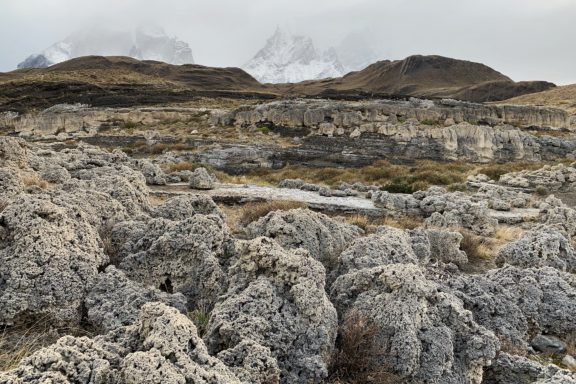
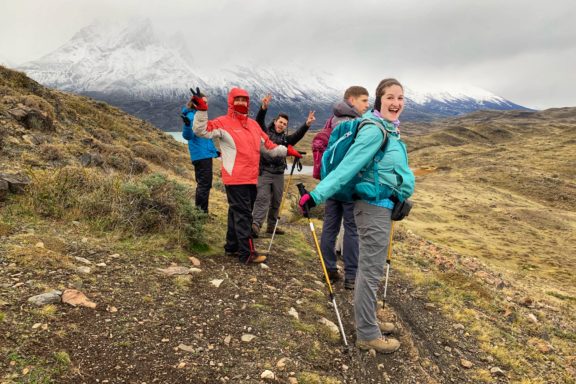
As with all your trips, great views!
And we learned what a guanaco is. I misread it at first and thought you saw a gaucho carcass. Glad you didnt.
BTW, unborn cow sacks would probably cost $3,000 at Nordstrom’s.
Not too shabby of a view from your room!